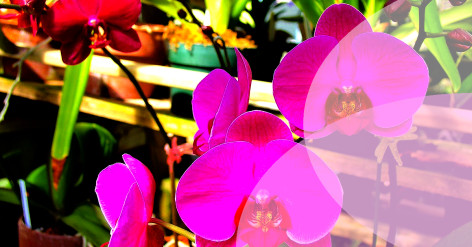Tips on How to Build and Design a Japanese Garden

Of Rock, Water, and Greenery: The Essence of Japanese Gardens
Welcome to your journey into the serene world of Japanese gardens. Affectionately known as nihon teien, these spaces are an oasis of tranquility, blending natural elements and aesthetic principles in harmony. Whether you're a seasoned gardener seeking new inspiration or a novice looking to create an enchanted escape, this guide will equip you with the essentials on how to build and design a Japanese garden, transforming your outdoor space into your own slice of Zen.
Unravelling the Japanese Garden: The Layout
The Japanese garden philosophy is deeply rooted in spirituality. The fundamental elements -- rock, water, and plants -- aren't just random choices, they're symbolic expressions of nature. The Royal Horticultural Society provides an enlightening explanation of these core Japanese garden elements and their relevance, affording a deeper understanding of your garden-to-be.
Karesansui: The Rock Garden
Streams and Ponds: Mimicking the Flow
The rock garden, or karesansui, is a quintessential part of Japanese garden design representing mountains or islands. Achieving this look may require careful positioning of rocks and raking of gravel to suggest water ripples. Remember, the aim is to elicit peace, not perfection. Your rocks donât have to be evenly spaced or match exactly. They should seem as effortlessly placed as nature would have done it.
Plant Life: The Green Canvas
Related articles
Water's fluidity is a key element in a Japanese garden. While not all gardens may accommodate a larger water feature like a pond or stream, thereâs always room for a water basin. These basins, known as tsukubai, often accompany stone lanterns and are used in tea ceremony rituals.
Stone Pathways: The Journey, Not The Destination
Planting plays a significant role in your Japanese garden design. Choose plants for their year-round appeal - think of blossoming cherry trees for spring, fiery maples in the fall, thick evergreens for winter, and vibrant azaleas in the summer.
Lanterns and Ornaments: Adding Sparkle to Your Zen Space
In Japanese garden design, a wanderer is encouraged to embark on a spiritual journey. A meandering stone pathway can bring this concept to life. Stones can be laid out in any pattern that pleases, but alternating large and small stones can create the illusion of distance.
Feng Shui and Japanese Gardens: A Perfect Harmony
To add interest and depth to your design, incorporate stone lanterns, and other sculptural elements. Whether you opt for a hand-carved granite lantern or a simple bamboo accent, ornaments are an elegant touch.
Understanding the principles of Feng Shui can greatly elevate your garden design. Itâs all about positioning and the flow of energy through the garden, making it a perfect partner for your nihon teien project.
Designing your own Japanese Garden is a deeply personal journey, as much about the process as it is about the end result. Remember that creating a Japanese garden is not just about following a checklist of elements- it's more about intention, emotion, and intuition. The true beauty of your garden will be a reflection of your inner Zen.
Now that you're well-versed in the artistry of Japanese garden design, it's time to pick up that rake, place that stone, plant that tree, and let your garden tell its tale. Let your imagination flourish and may the Zen be with you. Enjoy every moment of this tranquil transformation as your backyard becomes a peaceful paradise.




